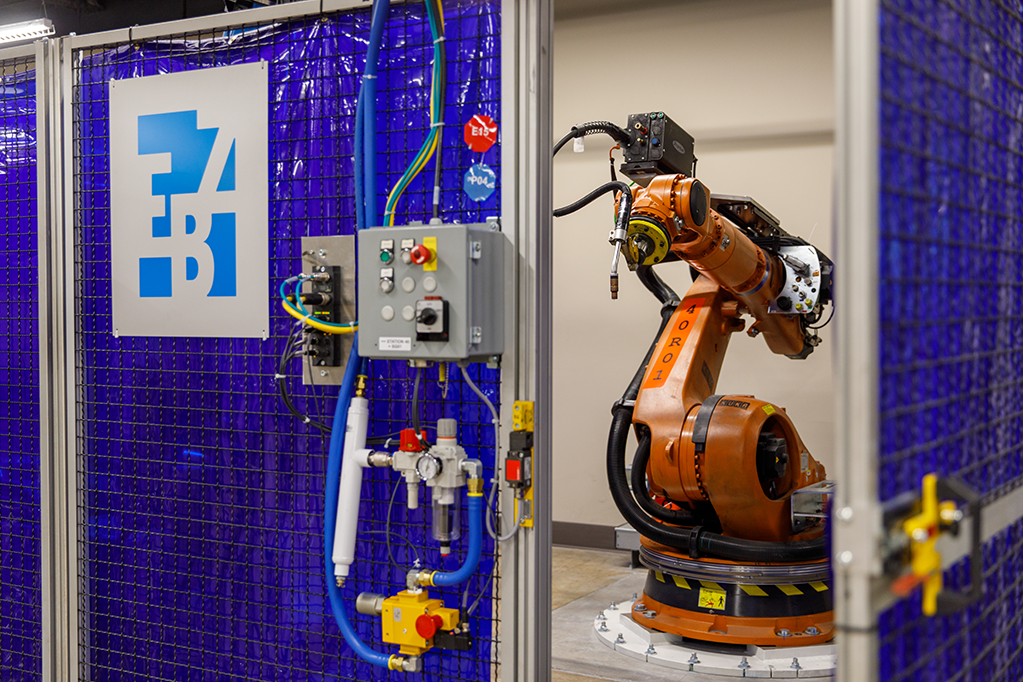TUSCALOOSA, Ala. – A proposal from The University of Alabama to lead a regional innovation and workforce development project for an economically depressed region of the state received initial seed money, the United States Department of Commerce announced this week.
The $500,000 grant to UA will position it among 60 other projects competing for transformative investments as part of the U.S. Economic Development Administration’s $1 billion Build Back Better Regional Challenge – the marquee of EDA’s American Rescue Plan programs – that aims to boost economic pandemic recovery and rebuild American communities, including some that have been grappling with decades of disinvestment.
The challenge provides up to $100 million to 20-30 regional coalitions to develop and strengthen regional industry clusters across the country, all while embracing economic equity, creating good-paying jobs and enhancing U.S. competitiveness globally.
The 60 projects – each a coalition of partnering entities – eligible in the challenge were selected from a pool of 529 applicants, and UA is the only applicant selected in the state.
The project proposed by UA and its partners seeks to grow the automotive sector and increase labor participation rates in the wider West Alabama region, including portions of the state’s Black Belt, a poverty-stricken area of the country originally named that for its rich, dark soil. The region has a 37% labor force participation rate, about 25 percentage points below the state average.
“As the state’s flagship institution, The University of Alabama is positioned to lead this initiative designed to improve quality of life through job creation and training while boosting the automotive industry in our state to continue advancing technological achievements,” said Dr. Russell J. Mumper, UA vice president for research and economic development. “We look forward to working with our partners to take a holistic approach to creating a highly-skilled workforce beginning in K-12, progressing through community colleges and universities and in partnership with industry.”
The UA-led coalition aims to combine education, investment and industry to develop the automotive cluster in the wider West Alabama region through the Driving Regional Innovation through Vehicle Electrification, or DRIVE, cluster. The coalition envisions a strategy to improve economic opportunity through vehicle electrification, leveraging its existing automotive industry, by creating the future of education and work through a partnership between the Alabama Black Belt and a Regional Innovation District.
If provided an implementation grant, the coalition plans to develop eight projects related to innovation and research and development, company creation and recruitment, talent development, and community development and sustainability. This project seeks to grow the automotive sector and increase labor participation rates in the wider West Alabama region.
“DRIVE seeks to create a ‘bottom-up’ coalition that will include many manufacturing partners and community partners throughout the Black Belt to foster sustainable job creation, innovation and competitiveness,” said Dr. Stephen G. Katsinas, lead on the proposal as director of the Education Policy Center at UA and professor of higher education and political science.
Coalition members in the proposed project include West Alabama and Alabama-Tombigbee Regional Planning Commissions, West Alabama Works, Tuscaloosa County Economic Development Authority as well as Shelton State, Bevill, Coastal and Wallace-Selma community colleges.
“This broad-based coalition will accelerate the transition to electric vehicles already well underway;” said Dan Blakley, co-lead on the proposal and associate vice president for economic and business engagement. “By leveraging the expertise of The University of Alabama’s talented faculty and students to create critical technologies for the future of mobility and power and coordinating regional and state resources to better prepare a workforce that’s already here in western Alabama’s Black Belt, UA can help lift Alabama’s most economically depressed region, while helping industry lead our state and the nation into the future of electric vehicle mobility.”
From UA, the project would draw from expertise in the Alabama Transportation Institute as well as the colleges of Education and Engineering, the Culverhouse College of Business and the School of Social Work.
The deadline for the second phase of the selection process is March 15, 2022.
The successful UA grant proposal was assisted by staff and students affiliated with the Education Policy Center including Dr. Nathaniel Bray, co-lead on the grant, center associate director and professor of higher education; Michael Malley, project manager for the center’s State Apprenticeship Extension Grant and Alabama Transfers initiative; and Stephanie Paul, a doctoral student in political science.
Contact
Adam Jones, UA communications, 205-348-4328, adam.jones@ua.edu
